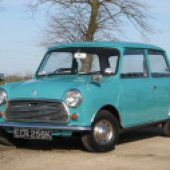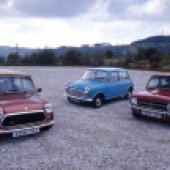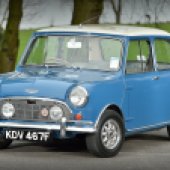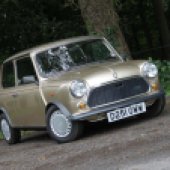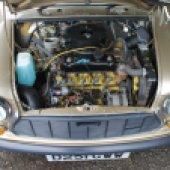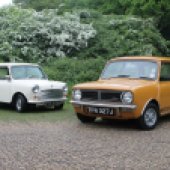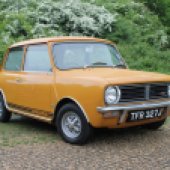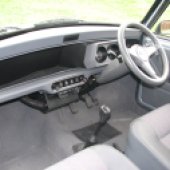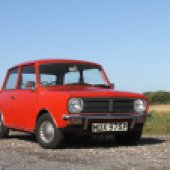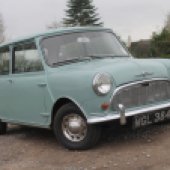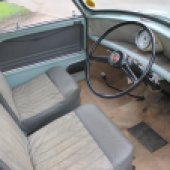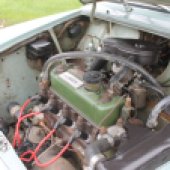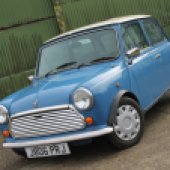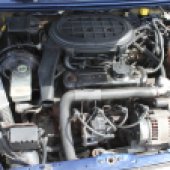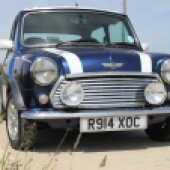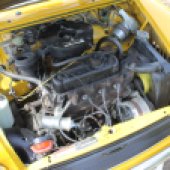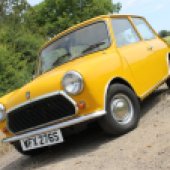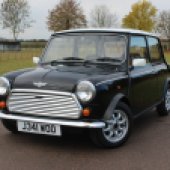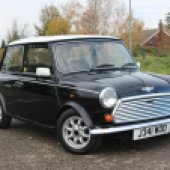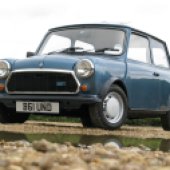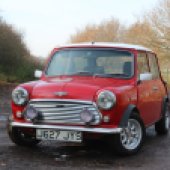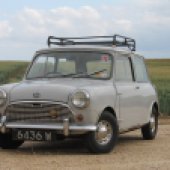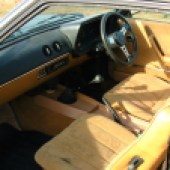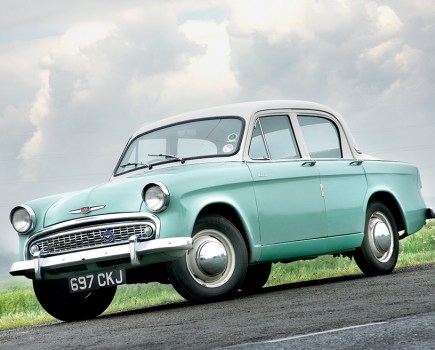Mini ownership can be a real joy – fantastic handling and huge fun at a most affordable level. But don’t court despair by buying a dud. Here’s our very big guide to a very small car
The Mini was, and is, one of the most entertaining small cars of all time. Issigonis designed the handling to be safe and easy, but inadvertently created a miniature racer – the cornering speeds you can achieve, and the amount of fun you can have behind the wheel, are beyond any expectations of what was intended to be a practical economy car.
Few classics can boast quite such an active ‘scene’. There are hundreds of Mini clubs all over the UK and beyond, while specialists also ensure you won’t be short of parts. The Mini has always been an ideal starting point for classic ownership. That hasn’t changed. However, make sure you buy one that’s genuinely good, especially if the asking price is on the high side.

Assistance for this guide was provided by Dean Theobald of Dean’s Minis and Gavin Parish of Somerford Mini. Both warn about cars on the market not being quite what they seem, so read on to ensure you bag a good one.
To start with, Dean recommends making sure you do your homework. There are more types and special editions of Mini than you may expect – certainly more than we can cover even in this large feature. Dean says: “Decide what you want and stick to it. Don’t be seduced by shiny paint. What era do you want? The 1970s Minis tended to be better built, while later ones are dreadful for rust.” Sadly, metal quality and rustproofing actually seem to have been poorer nearer the end.
Bodywork
A Mini will rust pretty much anywhere that isn’t made of rubber or glass. This not only means keeping an eye out for corrosion and bodges, but also checking originality. Minis that still look factory fresh are getting ever scarcer, so do your homework and check for the little clues that may hint at restoration work: Are the badges and graphics in the right place? Does it wear the correct bumpers and trim? Has a City E model been turned into yet another Cooper replica? Any one of the huge number of Mini specialists out there will help you answer these questions.
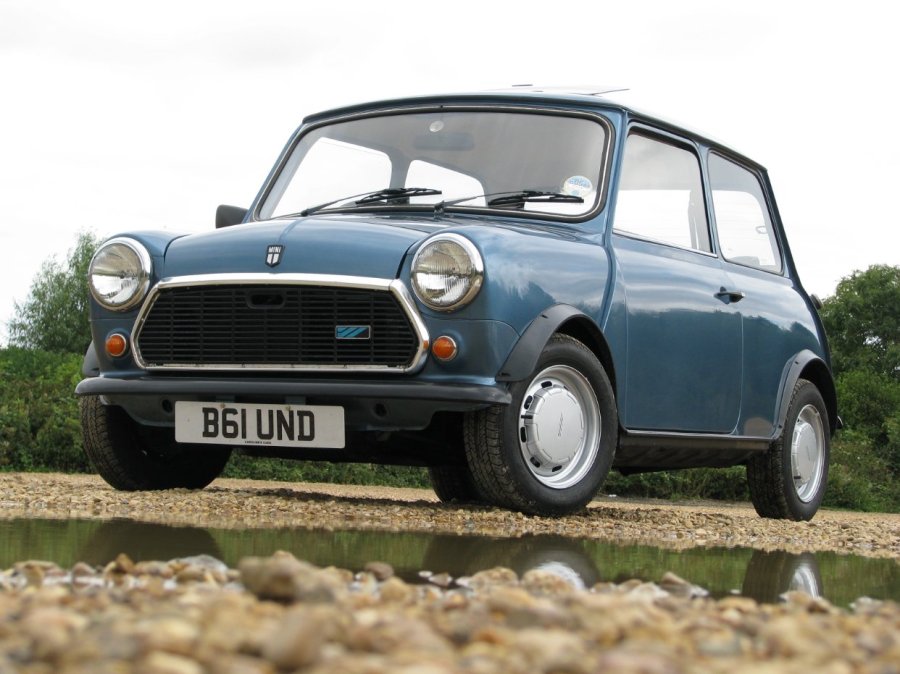
Another issue is previous repairs. Gavin says: “Poor repairs are a serious issue. Sadly there are still Minis out there with ‘MoT standard’ repairs, consisting of patches rather than panel replacement. You can still see cars where a new outer sill has been welded over a rotten inner.” Watch out for this. Dean adds: “Fresh paint is very shiny, but it doesn’t mean the car itself is actually nice. When it comes to repair panels, I prefer the Heritage ones, but they can still need a little work to fit nicely. Check a Mk1 Mini carefully though as Heritage doesn’t supply Mk1 floors.”
There’s no attempt to hide seams on a Mini. Some are very visible – the ones running from the roof down each corner – while others are hidden on the ‘other side’ of the body. This includes the snout, so start your inspection here. Mini Sport provides the front panel – containing indicators holes, front valance and grille opening – ranges from £170.52 for a 1990-1996 Mini, up to £211.60 for a square-nosed Clubman and £240.47 for a Mk1. You can get just the outer skin for more like £50, but if that has started to rot, then more extensive corrosion behind it is very likely indeed. Get the car on full steering lock to enable you to check the inner wheelarches on each side.
There are no bolt-on panels in a Mini body – they’re all welded to each other, so replacement of any rotten panels means they first need cutting away, then replacements welding into place, which takes some care and skill to get right. That adds significantly to the cost yet again. It’s easy to tot up over £600 just in panels (let alone painting and fitting costs) for a Mini’s front end. It’s also very likely that if there is rust in the outer and/or inner wings, there will be rust in the scuttle panel and the ‘A-panel’ around the door hinges, so it really does pay to check a potential purchase very carefully indeed! If a Mini has been restored, check the panel fit very carefully. “It is very tricky to get panel gaps right,” confirms Dean.
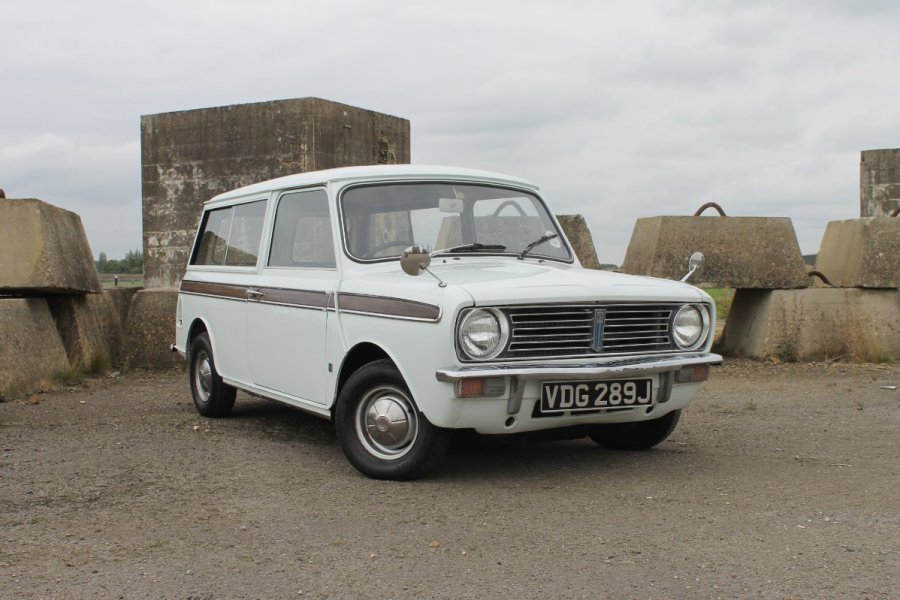
If all is good so far, then inspect the sills – especially around the jacking points, which can be bought separately for less than £10 each. Sills – inner and outer – will set you back less than £50 per side, but again, it’s the labour to fit them that’s the problem. In addition, it’s highly likely that rot will then be found in the floors, which makes checking these a sensible next step. A hand on the carpets will swiftly let you know whether water ingress is a problem. It’s not really possible to lift the carpets (because it’s one big section) so you really need to get underneath the car – not easy with a Mini – to check the condition of the floors.
Front subframes don’t often corrode as they’re usually doused in engine oil. The rear subframe is less well protected and replacement will probably set you back around £600 if a pattern subframe is used, though the cost depends on how many brake/suspension components need to be replaced. Genuine subframes range from £370.26 to just over £500 for a late Mini due to the suspension changes made.
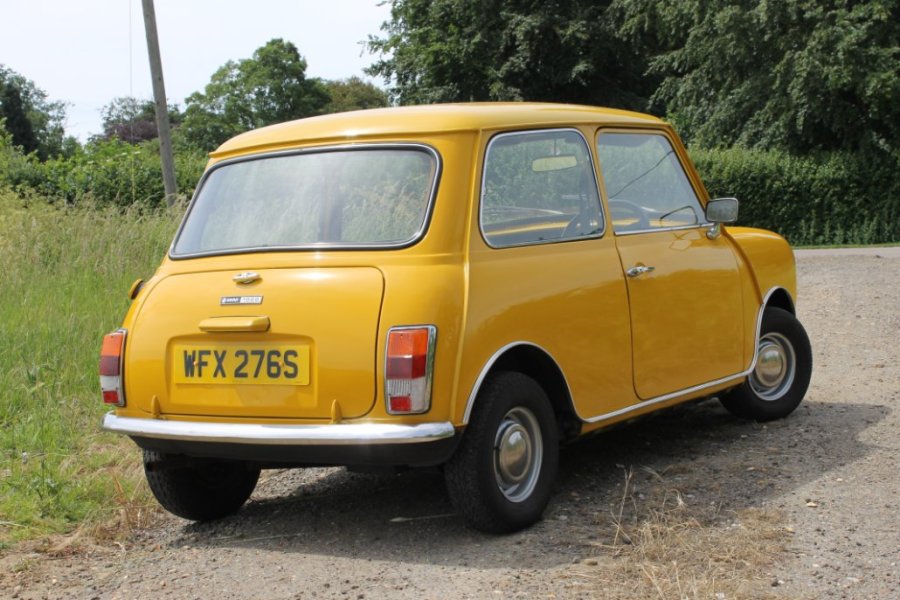
Rear wheelarches corrode badly and can usually be inspected inside depending on the trim level. If carpeted, give them a good prod to check for soft areas. Then, head back outside and check for corrosion inside the boot – especially in the battery tray.
Regarding bumpers, grey or black bumpers were fitted for most of the ’80s production run. Getting bumpers in this correct finish is frustratingly difficult. They had a matt finish that aftermarket bumpers just don’t seem to recreate very well.
Engine and transmission
The A-Series engine is pretty hardy by the standards of its day, though it will make it obvious when a rebuild is due, usually by the amount of acrid blue smoke that will start to appear from the exhaust. This engine has a reputation for not being very oil-tight, but things can be improved a lot. A-plus engine from the early 1980s onwards are generally longer-lived and more oil-tight, but this declined towards the end of production as the tooling wore out and the engines carried higher states of tune. Tired gaskets and seals make them far worse with key problem areas being the rocker cover, driveshafts and gear selector rods. Minis built between 1992 and 1996 had an inadequate rubber olive in the oil transfer pipe at the front of the engine that only made matters worse. Somerford Mini sells it for just £2.86. It also sells the rocker cover gasket for just £1.30 and a selector rod kit of an improved design for £5.14. Dean says: “You can get them oil-tight. Briefly.”
Aside from blue exhaust smoke, you need to be confident that the engine isn’t overheating. This can be tricky as only posher or sportier Minis tended to have a water temperature gauge. You can check the state of the coolant though: If it looks old and rusty, there’s a fair chance the radiator and block have started to silt up. Regular coolant changes (every couple of years) are essential. Have a good look at the condition of the hoses too.
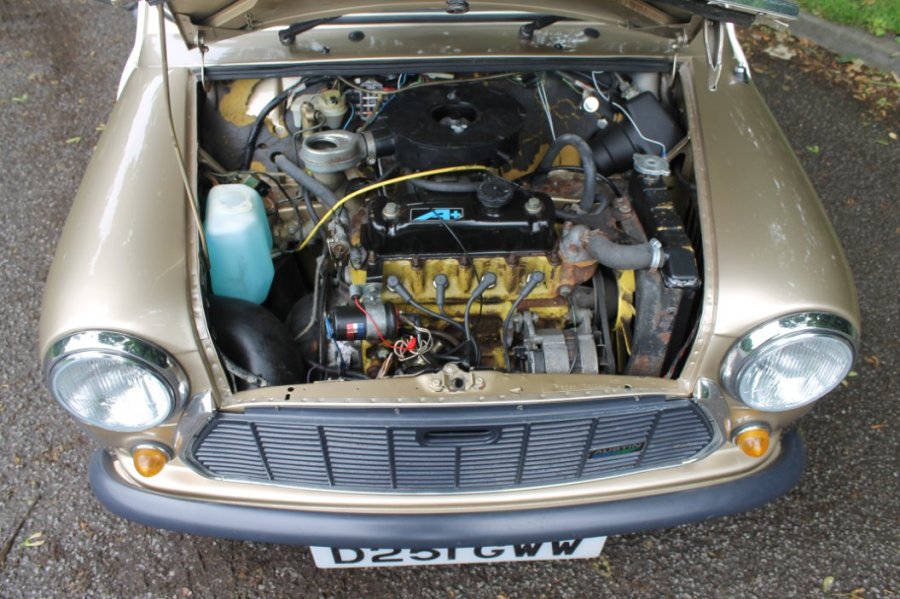
Regular oil changes are essential too, as this oil also performs its duties in the gearbox, which famously lives in the sump. Pull the dipstick and check whether the oil is black and aged or nice and golden. Check for creamy deposits under the oil filler cap that might suggest head gasket failure – which isn’t too difficult to remedy. Carburettors and fuel injection systems tend to be reliable, so just ensure the tick-over is steady and that the engine pulls well during a test. A reconditioned, ready-to-fit 1275cc engine will cost you around £1500, though there may be a surcharge against your old engine.
The gearbox is probably the most fragile mechanical aspect of a Mini. You therefore need to listen out for worrying noises, though the transmissions were never entirely quiet. A little whine is fine – it’s a characteristic of the cars. Worn bearings create more of a hissing noise in the early stages, so listen out for that. Watch also for failed synchromesh, though early Minis never had it on first gear.
Replacing the bearings on a Mini gearbox is certainly possible, and Mini Sport sells a bearing kit for the four-synchro gearbox for £88.67, with a full reconditioning kit retailing at £194.08. A gearbox with all the reconditioning work done for you will cost around £760 and again there may be a surcharge against the return of your old gearbox.
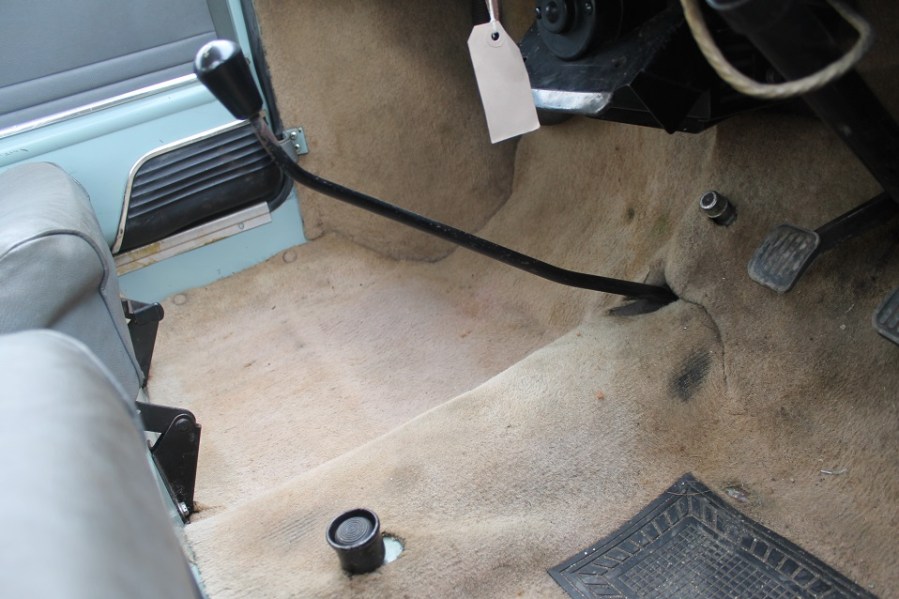
Incidentally, two different remote set-ups were used on the Mini. The Mk1 Cooper used a bulky remote set-up in place of the earlier ‘magic wand’ direct lever. A new design was gradually fitted from 1973 using rods, and this continued for the life of the Mini. Five-speed conversions, usually courtesy of Jack Knight, do exist and take the strain out of motorway journeys.
The clutch is hydraulic, so a failed master or slave cylinder will make gear selection very difficult. An easy way to test this is to turn the engine off and then see if gear selection improves. If the clutch is slipping, a kit is around £50.
AP’s incredible automatic transmission needs to be in fine fettle to work properly. On a test drive, watch out for thumping changes or slipping in gear. Make sure it works in all gears too. Valve blocks can get gummed up and prevent some gears from working.
Suspension, steering and brakes
‘Dry’ Minis (the vast majority) use rubber cones for suspension, with small telescopic dampers. No Mini will ride like a limo, but tired dampers cause the ride to become extra bouncy – especially if the rubber cones have become aged and stiff. This is definitely something to check for on a test drive. Cones approved by Dr Alex Moulton are sold by Minisport for £38.74 each. KYB gas adjustable dampers are recommended and cost £128.74 for a full set.
Dean adds: “The front cones should be changed every five to ten years. When they’re tired, the front end sits very low, which some people like. The ride will be awful though. Go genuine for replacement cones. There are some bad ones about.”
The ‘wet’ Minis arrived in 1964 and ran to 1969 (1971 for the Cooper S, Clubman and 1275GT). These used Hydrolastic displacers that were interlinked, as on the BMC ADO16. Sadly, replacement displacers are very hard to find, so many ‘wet’ Minis have been converted to the ‘dry’ set-up. That’s probably sensible if you’re planning to use a Mini of this era intensively.
On all Minis, there is a grease point for the rear suspension arm. A good indicator of how well the car has been cared for is the state of this nipple: Is it clean or does it look like it has never seen a grease gun? Gavin says: “Too many Minis have been poorly looked after by people who don’t understand them. Many garages don’t even know what a grease gun is these days. It’s one reason we often have to overhaul rear radius arms.”
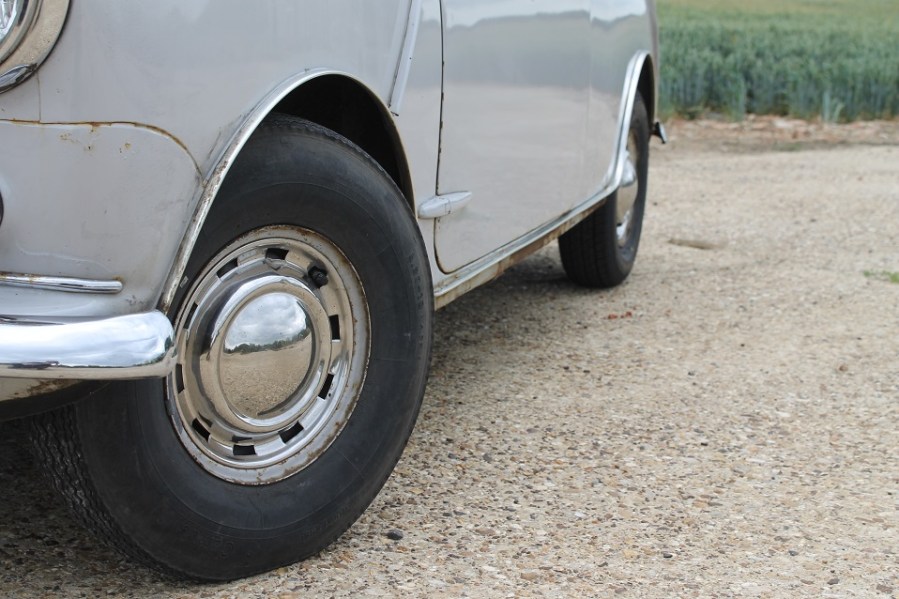
The super-direct steering is one of the best things about a Mini. There should be no play at all. The front swivels need greasing and don’t always receive such treatment, but it’s worth jacking up each corner if allowed, so you can see if you can find play at the road wheel. If that greasing has been neglected, it can make the steering feel stiff. If play has developed in the rack, replacement will cost £60 to buy. Fitting isn’t particularly difficult. Track rod ends are less than a tenner apiece and can be another source of play. Give the steering wheel a wiggle too. Column bushes can cause a vague sensation and, if the column will come away without a fight, are pretty easy to replace.
Note that the fitment of 13-inch wheels led to a restricted steering lock, as there just isn’t enough room for those larger wheels to turn as far in the wheel arches. This makes the turning circle laughably poor. They may look good, but those bigger wheels do nothing for ride comfort, nor practicality. Says Gavin: “13-inch wheels were way too big. They ruin the car. Many feel the ten-inch cars are best.” Dean adds: “Watch for 12-inch Minis that have been converted to 13 inches. There are lots of differences – the ‘arches need trimming and there are rear subframe and steering rack differences.”
With very little weight, even the earlier all-drum Minis should bring the car to a halt in good order. Front discs certainly improved matters, but it should be noted that the later factory-fit discs required the fitment of 12-inch wheels. If you want smaller 10” wheels, you need a Cooper-esque conversion kit. Front discs were not fitted as standard across the board until 1984. Those larger discs were first seen on the 1275GT in 1974, which until then used the smaller type. A servo wasn’t introduced across the range until 1988, but it does reduce the pedal effort required. It was standard on Cooper S and 1275GT Minis.
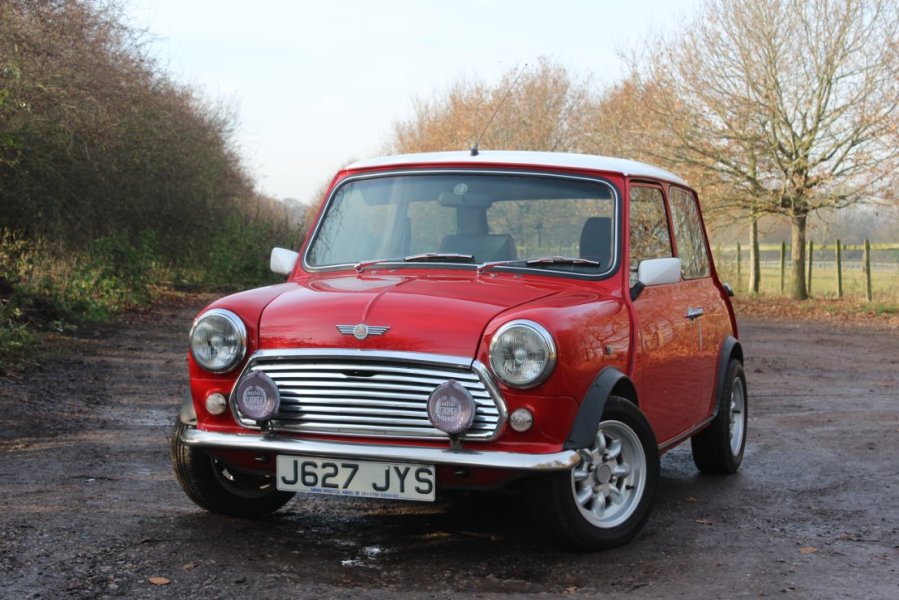
Badly adjusted drums, failed wheel cylinders or seized callipers can all cause a Mini to pull to one side. Callipers can easily be overhauled at home – the original steel pistons seize, so Minisport’s stainless replacements (£10.82 each, two per calliper) are a good idea. Budget on another tenner for a seal kit.
Interior, trim and electrics
Inside the usual problem is just wear and tear, unless leaky body seams and seals have caused water damage. Seats generally got larger over the years, with later Minis having enormous seats and ever greater luxury – walnut dashboards, leather and even airbags – if one is fitted, make sure the warning light goes out after the engine is started. If originality is a major driver, you may struggle to find a Mini that hasn’t seen some form of interior overhaul.
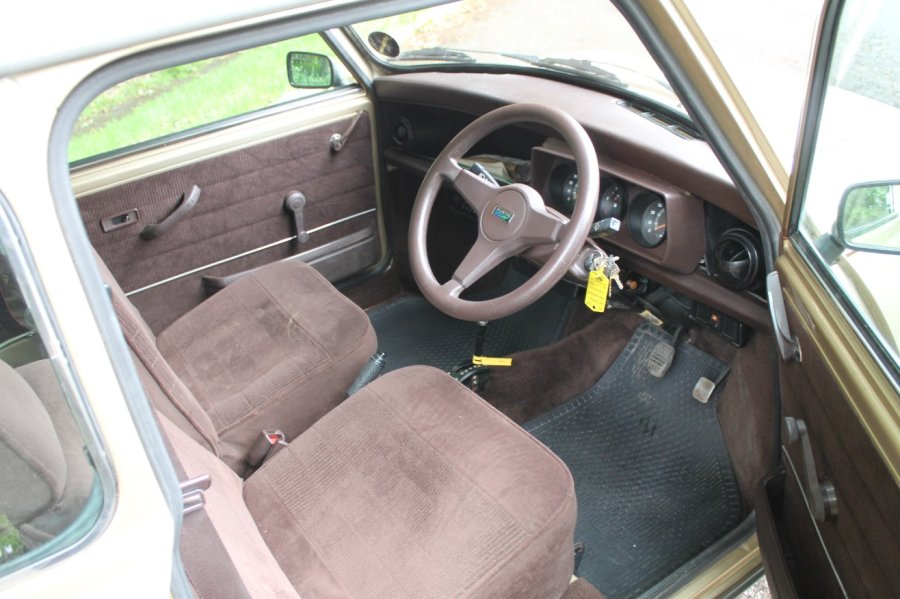
1985 was the last year that a central speedometer was fitted. After this, a more conventional dashboard similar to the Clubman/1275GT was used. If you’re considering a Mini for regular use, it must be pointed out that column stalks are a lot easier to use than the little switches of Mk1 Minis and a lot easier to reach – especially with seat belts on!
Replacing seat material can cost anywhere from £149 for a black, vinyl rear seat cover, to over £1100 for a full seat kit, in leather, for a 1993-1995 Mini. You can get the foam seat bases (typically less than £30 each for the earlier-style seats). As you can see though, overhauling a Mini interior involves no small cost. With some – such as the ‘Eighties Mayfair – you’re stuck with trying to find good secondhand items, as the velour seat covers are not currently in production.
Dean says: “It can be a nightmare trying to find interior bits, especially for the ‘Eighties Minis. My advice is that if you want a ’80s Mini, make sure the interior is good. Bodyshells can be repaired so are less of a problem. Don’t forget to check the headlining.” It’s a similar story with seats in the LAMM and Rover Mini Cabriolets – though a seat refurbishment specialist may be able to help, at a cost.
From 1973 an alternator replaced the earlier dynamo, though conversion of earlier cars is possible. Give the belt a quick tension check. If it’s too tight, it can damage the alternator bearings and also the water pump bearings. There’s not a lot of electrical equipment in most Minis, so check that everything works – including the rather feeble heater.
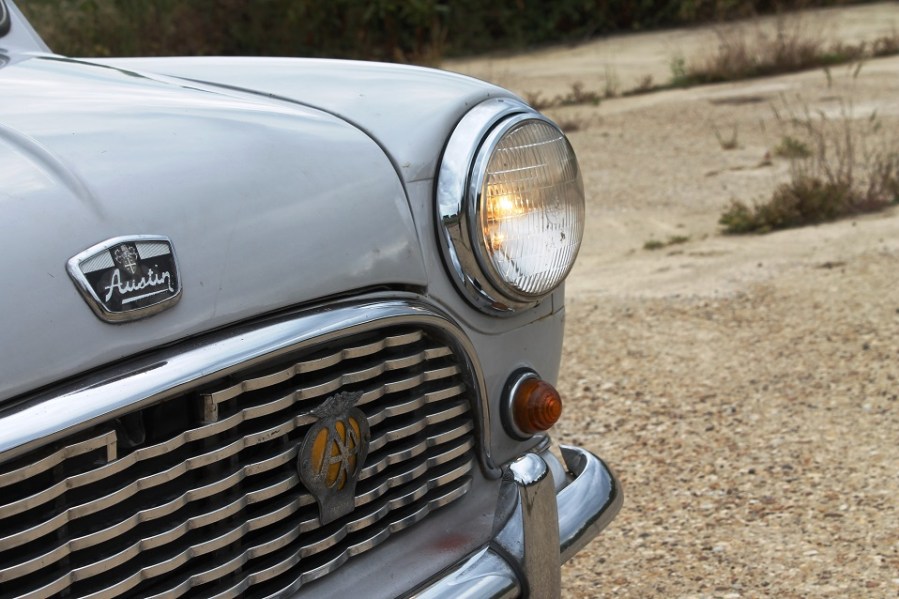
Cars with a front-mounted radiator also have an electric cooling fan, which you need to ensure works correctly. With the car parked up after a test drive, wait until it cuts in but keep an eye on the temperature gauge to ensure it doesn’t overheat.
Single-point fuel injection (SPi) was fitted from 1993, in order to improve emissions. This changed to multi-point injection (MPi) in 1996, which is rather better. There’s a lot more complication, but hopefully more reliability – as well as the possibility of diagnostics to help find a fault. Be wary if the Check Engine light is on, though it could simply be a duff sensor.
Dean says: “The MPi is much better but the SPi can be costly to get through emissions tests if things have gone wrong.” Both our specialists rather preferred the carburettor and points era, though Gavin warns: “Points and condensers can be poor these days, so electronic ignition is a good idea.” That can also banish the Mini’s reluctance to perform in wet weather.
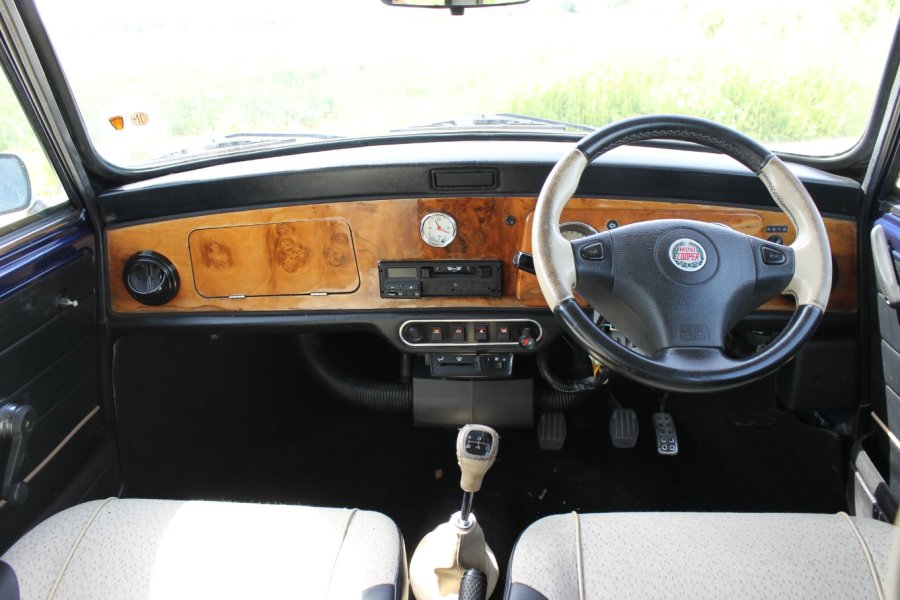
Mini: our verdict
Even now, a generation after production ended and three after it began, the popularity of the Mini seems to be undiminished. Equally, it’s appeal seems to be as obvious as ever – few cars are as fun to drive and easy to own, and there really is a Mini out there for everyone. And if there isn’t one out there that’s exactly what you want you can make any Mini your own.
But that, and the Mini’s inherently sporty nature, means that lots of owners modify their Minis, which has been happening virtually from the moment it went on sale in 1959. This can make it difficult to find one that hasn’t been meddled with. Find one that hasn’t been ‘Cooper-ised’ and you’ll own something that’ll only go up in value, but which still has plenty of Mini magic. Be wary though as modified Minis have not always been improved by such meddling.
This is all the more important because there really is no such thing as a truly cheap Mini anymore – certainly not compared to the days when you could sweep them out of the free-ads for a few hundred pounds and a budget of a few thousand gave you a wide choice of solid Mk4 and Mk5 cars to choose from. The relative bargains are still the Minis from the ’70s and ’80s, especially the ones in lower trim levels, but we’re not dealing with pocket-change now. The most valuable Minis are exceptionally good Cooper Ss, which go for £40,000 or more and even a decent but average one will set you back £20,000 or so, and smaller-engined Cooper are only about 20 per cent behind them. Similar prices are attached to 1959-built Mk1 saloons and early estates, while later Mk1s go for £10,000-15,000 in good condition.
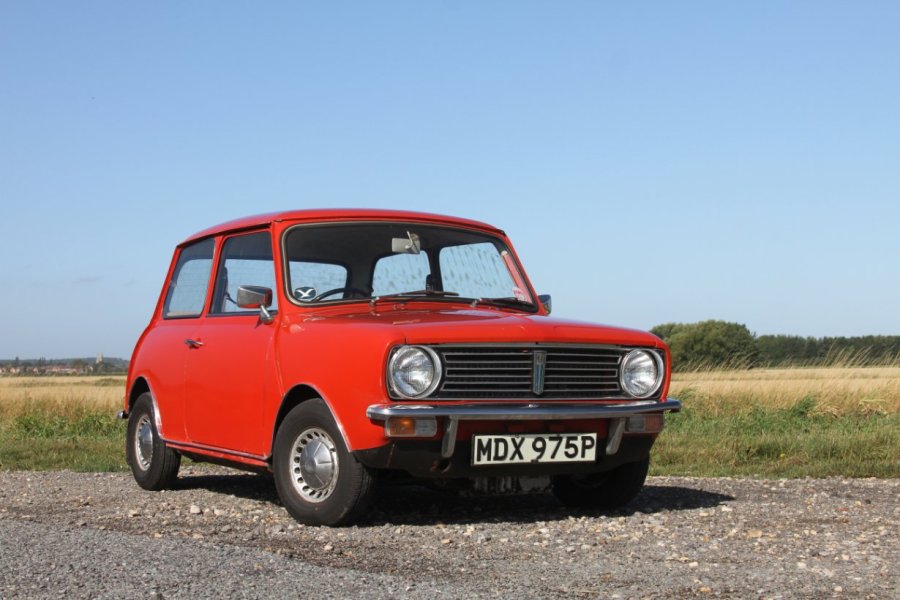
The ‘square nose’ Minis used to be a bit of a liability but came into their own in the 2010s and start at £10,000 or so for an average 1275GT and up to £25,000 for an immaculate restoration. The best Clubmans are £12,000 or so and good ones start at about half that.
The standard-issue Minis from the 1970s and 1980s generally cluster in the £5000-10,000 region, with anything under £3000 being a rolling restoration prospect at best. Some special editions such as the original Sprite from the early 1980s or the Sky and Rose models from later in the decade, are desirable and rare so one in good condition with all the right features still present will be much more valuable than the average. A verified, original and smart ‘carburettor Cooper’ (an RSP or an early 1990/1991 production example) could be £25,000 or more.
Things pick up again when considering the 1990s cars. You could get a 1990s Cooper for £6000 but you should double that to be sure of not buying a rustbucket with worn-out suspension and dodgy electrics. The really good ones with low mileage and good history come it at £15,000 and upwards, and if you want a late Cooper with a Works or Sports pack or one of the late special editions in really fine fettle you’d need a budget of at least £20,000.
Mini timeline
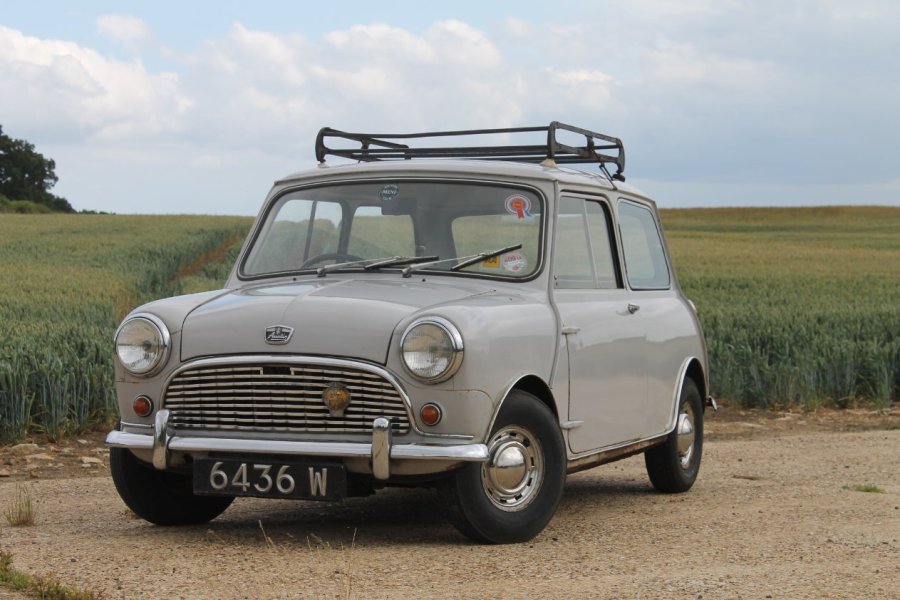
1959
Original Mini is launched in August, as a two-door saloon with a 33bhp 848cc engine and sold as an Austin Seven or a Morris Mini-Minor, in (extremely) basic or Deluxe trim.
1960
Long-wheelbase models introduced, including estates with optional non-structural timber frames (Austin Seven Countryman and Morris Mini Traveller) and van and pick-up models.
1961
The first Cooper models (Austin Cooper and Morris Cooper) are introduced, with 55bhp 997cc engine, front disc brakes, a remote gearchange, three-dial instrument panel, two-tone paint and improved seats and trim. Shortly afterwards the Super trim level is introduced to the standard cars – the same cosmetic and trim spec as the Cooper but without the mechanical upgrades.
1962
From January the Austin Seven is renamed the Austin Mini. Over the course of the year the basic Mini is phased out, what was the Deluxe trim becomes standard and the Super is renamed the Super Deluxe. Fresh-air heater with through-bulkhead intake tube introduced.
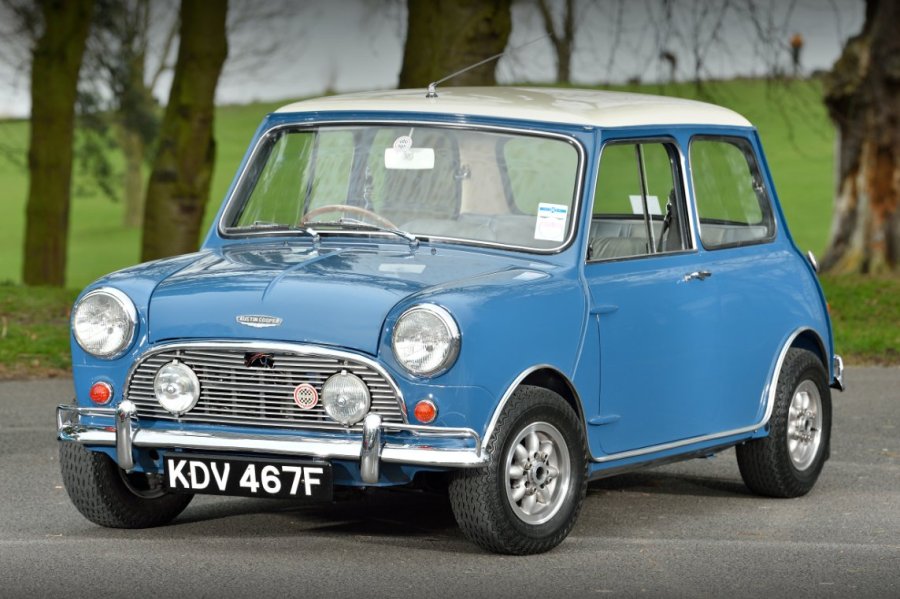
1963
The Mini Cooper S is launched, originally with a 1071cc engine with 70bhp.
1964
In April the standard Cooper engine switches to a 998cc version while the Cooper S is available in 970cc (mostly for sub-1.0-litre racing classes) and new 1275cc form – the latter is by far the most popular. Later in the year Hydrolastic suspension is rolled out on all saloon-body Minis.
1965
AP four-speed automatic transmission becomes optional on all Minis. 970cc Cooper S withdrawn.
1967
Mk2 Mini launched in October. Reprofiled grille and rear lamps and larger rear window. 998cc engine now optional on non-Cooper cars and standard on estate models. Comes with a Cooper-style remote gearchange. Morris Mini-Minor simply becomes the Morris Mini.
1968
A new manual transmission with more durable internals and all-speed synchromesh is introduced.

1969
Mk3 Mini range introduced, with greatly simplified bodyshell. Unified ‘Mini’ brand replaces previous Austin and Morris versions. The ‘square-nose’ Clubman replaces higher-spec previous versions. Clubman Estate is the only estate model from this point. Clubman-bodied 1275GT replaces Cooper (apart from special-order Cooper S). Standard Mini 850 and 1000 models revert to ‘dry cone’ suspension.
1971
Hydrolastic suspension dropped from Clubman and 1275GT. Last Cooper S produced.
1975
Clubman models receive the 1098cc engine with 55bhp in place of the earlier 998cc version, although this is retained on cars with automatic transmission.
1973
Direct-action ‘magic wand’ gearchange replaced by remote type on Mini 850.
1974
The 1275GT is fitted with unique 12-inch wheels to accommodate larger front brake discs.
1976
Mk4 Mini launched with rubber-mounted front subframe and larger rear subframe bushes to improve refinement. Twin column stalks for headlamps, wipers, horn and indicator controls introduced.
1977
Rear lamp units altered to incorporate reversing lamps.
1979
Ultra-basic low-cost ‘City’ trim level introduced with 848cc engine, complemented by improved 850 Super Deluxe. First limited edition Mini – the 1100 Special – is introduced as a 5000-car run with 1098cc engine in the ’round nose’ body, alloy wheels, wheel arch eyebrows and 1275GT-style three-dial dashboard.
1980
848cc engine phased out in all but Van/Pick-Up models. 998cc engine is fitted in re-engineered and modernised A-Plus form and is the only engine available in the standard Mini from this point. Clubman, Estate and 1275GT models discontinued (replaced by the Austin Metro).
1982
‘Mayfair’ special edition introduced with similar cosmetic features to the 1100 Special but with the 998cc engine plus velour seats and more accessories and equipment and standard. Successful enough to become a standard model.
1983
Van and Pick-up models discontinued.
1984
Mk5 Mini launched. Now re-branded as the Austin Mini. All models now have 12-inch wheels, front disc brakes with servo assistance and Special-style wheel arch extensions. City E model combines basic trim with economy-optimised engine and gearbox.
1987
Austin brand is withdrawn, leaving Mini as a stand-alone marque once again. Standard range consists of basic City and plusher Mayfair, plus a series of special editions; most are based around colours (Sky, Rose, Racing, Flame, Red Hot, Jet Black) or areas of London (Ritz, Piccadilly, Park Lane).
1990
An official Mini Cooper is relaunched, with 1275cc MG Metro-spec drivetrain. Originally built as a limited edition by Rover Special Products (RSP), then as a production model. Mk6 Mini introduced later in the year, with few obvious differences from Mk5 but had engine mountings redesigned to more easily accept 1275cc drivetrains with fuel injection.
1991
Single-point electronic fuel injection (SPi) fitted to 1275cc engines. 998cc carburettor engines withdrawn by the end of the year, ending production of the basic City model. Mayfair becomes a more upmarket 1275cc model – a luxury-orientated trim alongside the sporting Cooper.
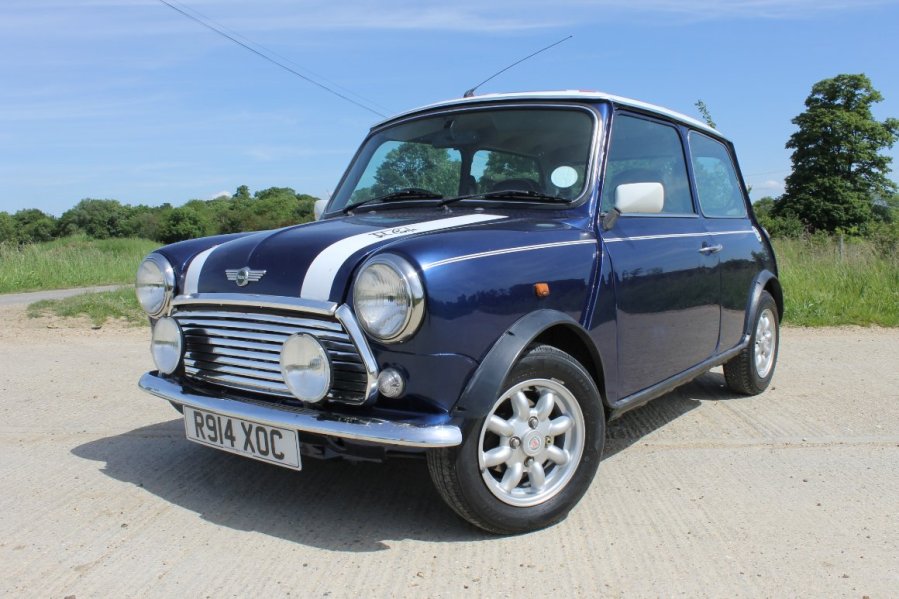
1996
The last version of the Mini, the Mk7 is introduced. The 1275cc engine now has multi-point fuel injection (with 63bhp) and a front-mounted radiator. Interior of all models now has a full-width facia (no parcel shelf) and a driver’s airbag. Relatively basic 1.3i model sits below the Cooper (the best-seller).
1997
John Cooper Garages provides the Cooper S pack which boosts power to 86bhp – this became a factory-approved option in 1999.
1999
As Mini production winds down, the last full year of the model’s life sees a flurry of special editions, including the 90bhp John Cooper S Works (the most powerful production Mini ever offered), the Mini 40 (for the model’s 40th anniversary) and the John Cooper LE.
2000
UK Mini range is slimmed down to three models – the ’60-style Mini Classic Seven, the Mini Classic Cooper and the upgraded Mini Classic Cooper Sport. The last Mini rolls out of Longbridge on October 4th, after 41 years and a production total of over 5.3 million Minis.



